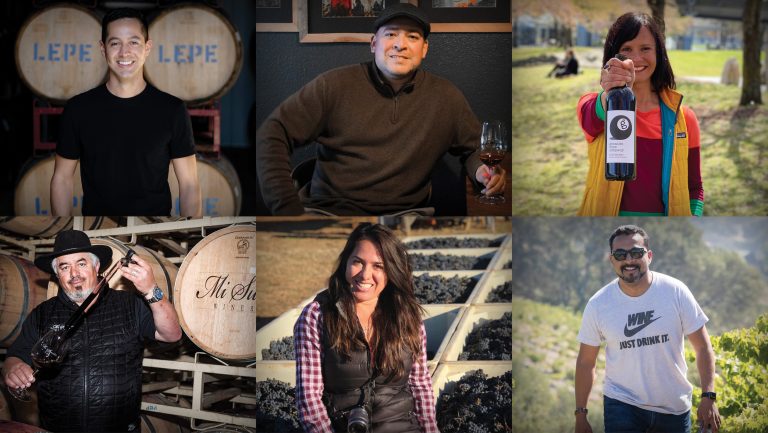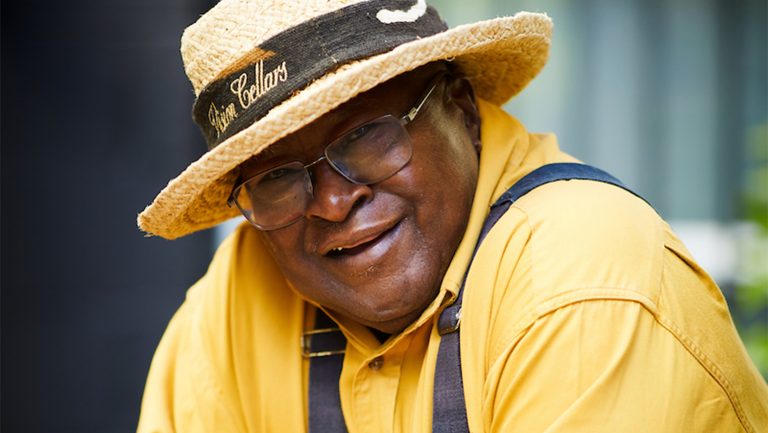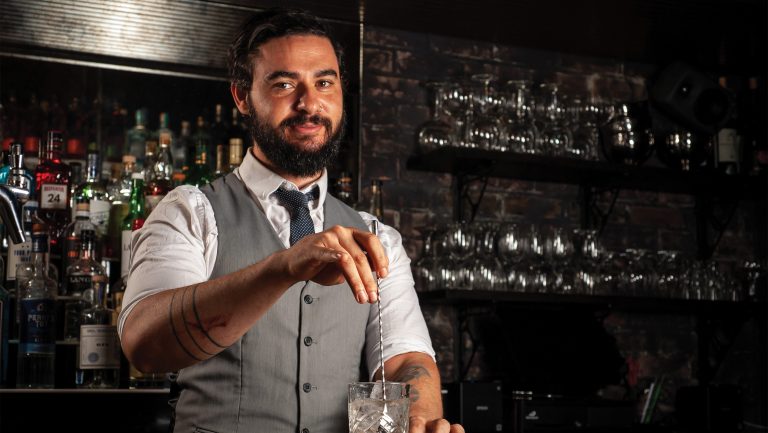In December 2019, I drove through lettuce fields in California’s Salinas Valley to meet Miguel Lepe, who was the first Mexican-American winemaker on the Monterey peninsula. A young pioneer, Lepe makes the wines for Wrath Wines in the Santa Lucia Highlands as well as for his own label, Lepe Cellars. The wines we tasted together—a neutral-barrel, Chablis-style Chardonnay, a savory, own-rooted Petit Verdot, and a lithe Zinfandel with a white-pepper kick—were all naturally fermented from organic grapes.
The son of migrant farm workers, Lepe had never tasted wine when, on a whim, he enrolled in a viticulture class during community college. “What caught my attention were the smells: fermentation, grapes, new oak. I had no idea what it all was, but I knew I enjoyed it,” Lepe told me. He went on to graduate from Cal Poly’s enology and viticulture program and into gigs at Monterey’s Figge Cellars and Paso Robles’ Justin Vineyards, among others. In 2015, he launched Lepe Cellars.
“How big do I want to be? I don’t know,” he told me (at the time, he was producing 600 cases a year). “I want to sustain a tasting room, and I would like to work for myself eventually.”

Don’t miss the latest drinks industry news and insights. Sign up for our award-winning newsletters and get insider intel, resources, and trends delivered to your inbox every week.
A year and a half later, Lepe has doubled production and, indeed, has launched a tasting room—in Carmel-by-the-Sea. At 34 years old, he owns one of the only Latinx storefront businesses in this wealthy, white town. “I do feel my identity is a selling point,” he says. “I’m kind of an underdog, and I think people want to see me succeed.”
The Next Generation’s Mission
So it is with the newest generation of Mexican-American winemakers. For decades, the American wine industry has been powered by their people’s labor. According to Dr. Philip Martin, professor emeritus of Agricultural and Resource Economics at UC Davis’ Global Migration Center, probably more than 70 percent of hired field workers in wine in California were born in Mexico. Yet, the number of winemakers of Mexican heritage is few. UC Berkeley professor Alex Saragoza, who is writing a book on the subject, tracked down just 46 Mexican-American winemakers in California.
And, yet, for a demographic that has largely been involved in American winemaking for only 50 years, Mexican-Americans are increasingly influential. “It’s the cycle,” as Joe Reynoso, owner of Sonoma’s Crescere Wines, puts it—a version of a trajectory shared by other immigrant groups in America. “Mexican-Americans are at the inflection point. We came two generations ago, and we’re just now getting our footing, being able to accumulate the risks to start a winery or buy land ourselves. We’re pretty much in line where we should be based upon how long we’ve been here.”

With growing economic security come calls for greater inclusion and empowerment. The latest generation of Mexican-American winemakers is a diverse group. Some are bootstrappers like Lepe, others are heirs to multigenerational winemaking legacies. They share a commitment to their identity, and to the hard work, community, and aspirational history that has driven the success of the generations before them.
But their winemaking is largely different from their predecessors—and so is their agenda. Many of them are on a mission to uplift the stature of all Latinx workers in the American wine industry.
The Journey from Laborers to Owners
Mexicans were making wine here as far back as the 18th century, when Franciscan monks established missions in California. But in the modern era, says Saragoza, the first wave to make their mark in wine arrived under the Bracero guest-worker program, which brought 4.6 million Mexicans to the U.S. between 1942 and 1964, primarily for farm labor. Many employed in Napa and Sonoma vineyards stayed, some establishing vineyard management companies and, more recently, wineries of their own.
Among them were Belen Ceja’s paternal grandparents, who arrived in 1967. Along with their children, they started acquiring Carneros acreage 16 years after their arrival. “My father grew up in the vineyards, and as a little girl, I was always a farmer’s daughter, going to work with him,” says Ceja. She went to junior college for business and marketing but “fell in love with the art and physical labor” of winemaking.
Her father, Armando, is the winemaker at Ceja Vineyards, which he co-owns with his siblings. Ceja says her elders’ attitude was “go work somewhere else and get your knowledge, then let’s see what you have to bring to the table.” So she set out on her own, doing three harvests at Enkidu Wine and studying enology and viticulture at Fresno State. At 33 years old, she has run Heirs Winery, the Cejas’ custom crush facility, for the past eight years, facilitating winemaking for a dozen clients, including her father.

But Ceja is also winemaker for another Mexican-owned winery, Sonoma’s Aldina Vineyards, where she sources fruit from the organically farmed estate and other sustainable vineyards. Hers is a contemporary approach: low-intervention and environmentally friendly. Her Chardonnay for Aldina, for example, is whole-cluster pressed, stainless steel fermented, and finished in neutral barrels. Brisk and energetic, it’s not the classic California Chardonnay that she grew up with. “The market trend of the wine consumers has helped dictate many of our winemaking styles and wines being produced of my generation, which I think is pretty different from my father’s generation,” says Ceja.
Not everyone in Napa has Ceja’s level of family resources. Sam Parra’s grandfather came from Jalisco, Mexico and worked for Beringer for 34 years. His uncles founded the winery Vinos Unidos in 2016, and he learned the ropes making garage wine with family and suckering vines at Calistoga sites for pocket money.
But no matter how deeply rooted Parra’s Napa upbringing was—“I learned that Howell Mountain Cabernet was a classic pairing for a carne asado taco,” he says—his own parents didn’t work in wine. He went to college in sales and marketing, launched a successful branding company, and held down winery hospitality jobs before moving to Oregon’s Willamette Valley in 2016, where he worked mobile bottling lines to save money to launch his label.
Today, at 43, Parra makes 500 cases of cool-climate Tempranillo and Albariño, among others, for Parra Winery in Oregon. He works four days a week at another winery, has one day off in common with his wife, and is far from the community he grew up in. “The sacrifices I made, where I’m away from my family and friends, that’s the future of Mexican-American winemakers,” he says. “They are going to have to take their experience to an up-and-coming region where the cost of living is lower, and they can have a bigger budget to start their company.”

Oregon’s Growing Mexican-American Wine Community
In fact, Parra is part of an emerging network of Mexican-American winemakers in Oregon. “Community is so ingrained in us culturally,” says Maria Calvert, a PR consultant who is co-founder of the new advocacy organization Hispanics in Wine. “If you’re on your own trying to create your own wine, it’s a challenge not having a community to guide you. In Oregon, they’ve banded together.”
Sofia Torres McKay is a leader there. A former tech consultant who moved to the U.S. in 2002, Torres McKay and her husband, Ryan McKay, produce biodynamic estate wines in the Dundee Hills. They launched their label, Cramoisi Vineyard, in 2019. “I’m very involved with the vineyard crew,” she says. “Ninety-nine percent are Mexicans. The same language, same culture—the synergy we deposit together in the vines, that’s my heritage. We’re making wine with Mexican hands.”
“Mexican-Americans are at the inflection point. We came two generations ago, and we’re just now getting our footing, being able to accumulate the risks to start a winery or buy land ourselves. “- Joe Reynoso, owner of Crescere Wines
Working with her crew, Torres McKay came to understand that the language barrier, and the racialist culture of the wine world, kept vineyard laborers—or vineyard stewards, as she calls them—isolated. “They didn’t feel recognized, didn’t have a purpose, didn’t understand what their tasks achieved because wineries have no relationship to the crews. They didn’t even know they were the foundation of what we do,” she says.
To change that—and to address a chronic labor shortage as workers move on to higher-paying jobs with more mobility in construction and other sectors—Torres McKay got together with Red Dirt Vineyard’s Miguel Lopez and star winemaker Jesús Guillén, who died in 2018, and founded the Asociación Hispana de la Industria del Vino en Oregon y Comunidad (AHIVOY). The two-year-old organization empowers vineyard stewards to advance their wine careers through English-language immersion and professional development.
To support the work, Torres McKay recruited winemakers like Sam Parra and AHIVOY board member Cristina Gonzales of Gonzales Wine Company. The granddaughter of first-generation migrant workers who “followed the seasonal fruit” to Wisconsin, Gonzales fell in love with wine in 2001 while backpacking in Argentina. Harvest stints in California and a position at Oregon’s A to Z Wineworks followed. But because she doesn’t hold an enology degree, she says, “If I was going to move up in the ranks, I had to blaze my own way.” She made her first vintage in 2010, starting with Malbec from Washington’s Yakima Valley, vinified in a friend’s garage.
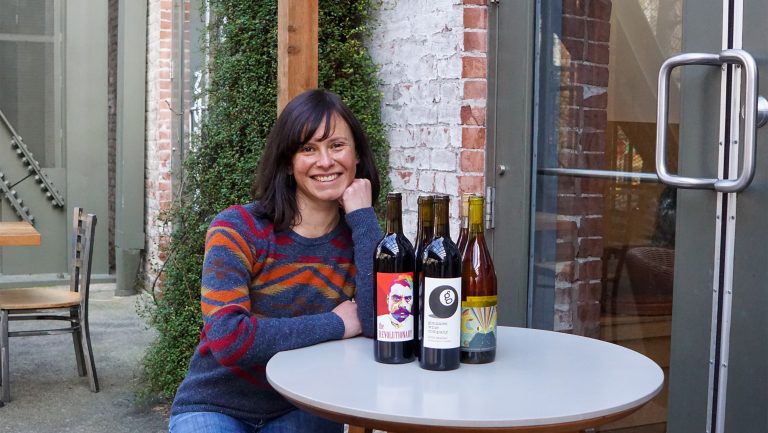
Gonzales’ production is less than 500 cases, but she and other Mexican-American winemakers in Oregon have been garnering attention through their work with AHIVOY and at collaborative events like Celebrating Hispanic Roots, a bilingual panel and charity fundraiser. “People didn’t know there were Latinos making wine, but we’ve played into the momentum of Black Lives Matter and people waking up to more diversity. There’s still work and healing to be done, but this is a wonderful time for the Latinx community,” she says. That goes as much for consumers as winemakers. “I’ve seen an uptick in Latinx wine enthusiasts in tasting rooms and more on social media about BIPOC communities being wine lovers. Wine is not just a white thing. It’s an everybody thing.”
The energy in Oregon will peak in mid-June during the first-ever Latinx Market, a wine, art, and culture fair to benefit AHIVOY. As part of the event, Gonzales and Torres McKay are offering a four-pack of wines called Las 4 Amigas, along with Guillén Family Wines’ Yuliana Cisneros-Guillén and Elena Rodriguez of Alumbra Cellars. Rodriguez, 37, left a nursing career in 2014 to help make her father’s farm profitable as an estate winery. On an estate where her uncle runs the vineyard, her brother runs the books, and her cousin runs the tasting room, Rodriguez’s new career is her way of honoring her family. “My dad came from Durango, Mexico, with nothing. He worked really hard and sacrificed,” she says. “I didn’t want to see this farm go away. Now I’m thinking about different ways to make the best Pinot.”
Recognition she’s received is encouraging to others. “I truly think there will be more Latinx winemakers,” she says. “I get a lot of private messages from the Latinx community saying, ‘You’re an inspiration.’ Just seeing somebody succeed has inspired others to move forward.”
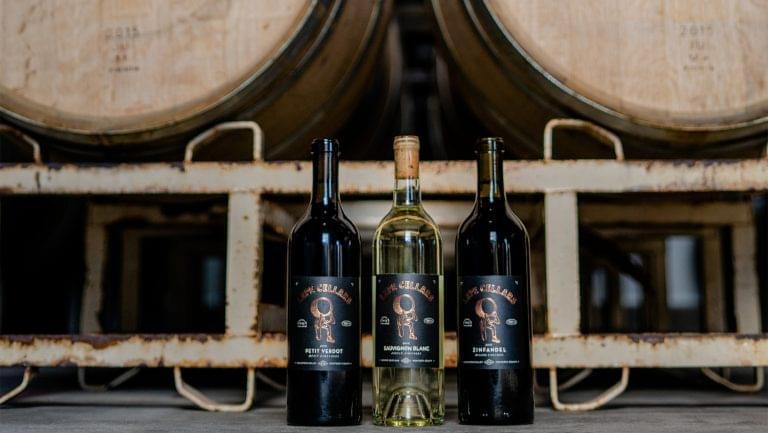
Creating More Inroads
These Oregon winemakers’ success, and the advocacy they’re undertaking, has a precedent in Napa and Sonoma. There, Mexican-Americans who came of age in or before the 1980s—the Cejas, Oscar Renteria of Tres Perlas Wines, and Roland Herrera of Mi Sueño, among others—have become substantial players in wine. Renteria is board director of the Napa Valley Farmworker Foundation, established in 2011 to provide education and professional development to vineyard workers. Herrera is founding president of MAVA—the Mexican-American Vintners Association—formed in 2010 to market members’ wines and fund scholarships for aspiring winemakers. “I love sharing my experience with younger generations that feel the American dream is no longer. It’s as alive as ever,” he says. “Just be smart, work hard, and stay focused—the fundamentals our ancestors taught us.”
One younger winemaker who’d agree with him is MAVA member Edgar Torres. He came to the U.S. in 1989 at the age of eight, smuggled in a VW bus. Growing up on the Central Coast, Torres learned to love wine working in restaurants. Today he produces 4,000 annual cases of Rhône, Bordeaux, and Spanish varietals at Paso Robles’ Bodega de Edgar.
“From where life started to the life I get to live now, it feels surreal,” he says. “I knew I wanted to make my parents proud. I didn’t realize it would be as good as it is, traveling the world, eating at the best places, giving my boy way better opportunities than I had. It does bring the tears out.”
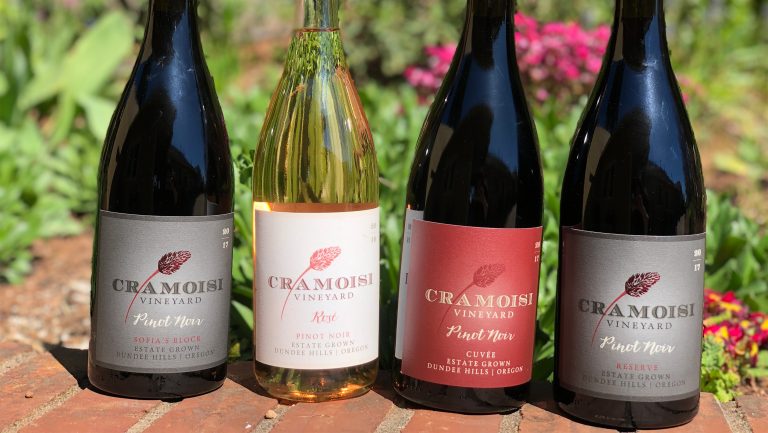
Torres “doesn’t want to be boxed in as a Mexican-American winemaker.” He’d rather be known for the excellence of his wines and their high scores. Still, he’s discovering that his background is important to others. In a 2020 essay, he wrote about how the Black Lives Matter movement helped him realize, “I now have a duty to share the story of my success with other Mexicans and people of color to help them envision an alternate path and to help challenge the stereotypes in my industry.”
Like others of his generation of Mexican-American winemakers, Torres was declaring that he can have his identity and his success as a vintner, too—that, indeed, they are inextricable. As Cristina Gonzales puts it, “I battle with imposter syndrome every day, but I have come to this position of confidence. I do know what I’m doing, and my wines speak for themselves.”

Dispatch
Sign up for our award-winning newsletter
Don’t miss the latest drinks industry news and insights—delivered to your inbox every week.
Betsy Andrews is an award-winning journalist and poet. Her latest book is Crowded. Her writing can be found at betsyandrews.contently.com.

